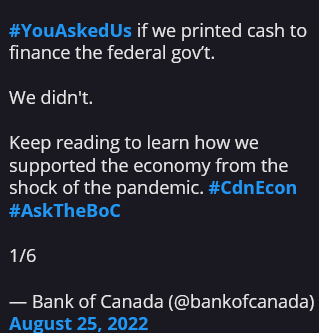This is likely in the “not yet” category, but it is something that I’m paying a little more attention to than most, namely the big European banks.
With the EU reacting to its poor energy policies by enacting demand restrictions, there will surely be further reverberations going forward in terms of the continent’s heavy industry. This will have spin-off impacts in terms of the credit that is extended to various corporations that are sensitive to energy input costs, and creating a whole financial cascade. Who ever thought that negative interest rates would actually have real consequences?
With that said, I’ve looked at various European banking entities, and just doing the most superficial analysis. Numbers are market cap (US billions), P/E, P/B and historical dividend yield.
UK
LYG: Lloyds Banking Group – 33 / 6.6 / 0.57 / 3.9%
BCS: Barclays PLC – 31 / 5.1 / 0.38 / 2.8%
France
BNPQY: BNP Paribas – 57 / 5.6 / 0.49 / 8.5%
SCGLY: Societe Generale – 18 / 7.0 / 0.28 / 8.0%
Germany
DB: Deutsche Bank – 17 / 5.4 / 0.25 / 2.7%
CRZBY: Commerzbank – 8 / 4.9 / 0.28 / 0%
Italy
ISNPY: Intesa Sanpaolo – 33 / 8.8 / 0.51 / 7.0%
UNCRY: Unicredit – 19 / 25.6 / 0.30 / 3.9%
Spain
SAN: Banco Santander – 39 / 4.6 / 0.44 / 4.6%
BBVA: Banco Bilbao Vizcaya Argentaria – 28 / 4.6 / 0.62 / 11.3%
Scandinavia
NRDBY: Nordea Bank (Finland) – 34 / 10 / 1.1 / 16.7%
DNBBY: DNB Bank (Norway) – 29 / 9.9 / 1.17 / 5.6%
SVNLY: Svenska Handelsbanken (Sweden) – 16 / 7.4 / 0.89 / 6.8%
Other notables
UBS: UBS Group (Switzerland) – 55 / 7.0 / 0.97 / 1.6%
ING: ING Group (Netherlands) – 32 / 7.8 / 0.62 / 4.0%
Note that all of the institutions above have international operations and hence they are not entirely exposed to the risks of their domestic markets.
Let’s compare this to Canada (market cap is in billions of USD):
Canada
RY: Royal Bank: 130 / 10.8 / 1.8 / 4.2%
TD: Toronto Dominion: 118 / 10.7 / 1.6 / 4.2%
BMO: Bank of Montreal: 63 / 7.3 / 1.7 / 4.6%
BNS: Bank of Nova Scotia: 65 / 8.7 / 1.3 / 5.8%
CM: Canadian Imperial Bank of Commerce: 43 / 9.4 / 1.3 / 5.4%
One immediate observation is that Canadian banks have much larger market capitalization than their European counterparts. Indeed, looking at the global picture, the USA and China have the largest banks by market capitalization, while the largest European one is BNP, very much behind in the standings.
Needless to say, some of these European bank valuations look compelling at a glance. However, to do the proper analysis of these large (and for the most part, incredibly opaque) institutions, one has to have a grasp on whether their loan portfolios will actually perform and to get a sense of where the geopolitical risks lie. But overall, Europe is trading like a disaster at the moment for obvious reasons (they are a slow-moving financial train wreck happening at the present time) – if, for whatever reason, it is better than a disaster, there perhaps may be some gains to be had in the future from the current depressed levels.
Unfortunately I am not skilled enough to make a nuanced differentiated bet on any specific company above – there are tons of analysts working in the usual institutions that are properly able to gain an edge on which of the above will do better than the rest, but my suspicion is that at some point, an unsophisticated player like myself can probably generate some alpha by constructing an equal-weighted ETF of some of the components above.
I do think I have a better “home field advantage” with the Canadian banks above, but that home field advantage tells me to back off for better values in the future. As far as Europe goes, however, the time is likely closer to a reasonable value bet.
That said, you may wish to disregard anything I say on international bank stocks simply because it does not look like that my investment in Sberbank (a couple days before the sanctions hit) will be materializing anytime soon – my largest one-shot loss in my investing history, assuming it goes to zero (which it effectively is at the moment for non-Russian investors).
